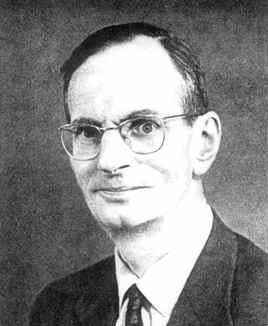

تاريخ الرياضيات

الاعداد و نظريتها

تاريخ التحليل

تار يخ الجبر

الهندسة و التبلوجي


الرياضيات في الحضارات المختلفة

العربية

اليونانية

البابلية

الصينية

المايا

المصرية

الهندية


الرياضيات المتقطعة

المنطق

اسس الرياضيات

فلسفة الرياضيات

مواضيع عامة في المنطق


الجبر

الجبر الخطي

الجبر المجرد

الجبر البولياني

مواضيع عامة في الجبر

الضبابية

نظرية المجموعات

نظرية الزمر

نظرية الحلقات والحقول

نظرية الاعداد

نظرية الفئات

حساب المتجهات

المتتاليات-المتسلسلات

المصفوفات و نظريتها

المثلثات


الهندسة

الهندسة المستوية

الهندسة غير المستوية

مواضيع عامة في الهندسة

التفاضل و التكامل


المعادلات التفاضلية و التكاملية

معادلات تفاضلية

معادلات تكاملية

مواضيع عامة في المعادلات


التحليل

التحليل العددي

التحليل العقدي

التحليل الدالي

مواضيع عامة في التحليل

التحليل الحقيقي

التبلوجيا

نظرية الالعاب

الاحتمالات و الاحصاء

نظرية التحكم

بحوث العمليات

نظرية الكم

الشفرات

الرياضيات التطبيقية

نظريات ومبرهنات


علماء الرياضيات

500AD

500-1499

1000to1499

1500to1599

1600to1649

1650to1699

1700to1749

1750to1779

1780to1799

1800to1819

1820to1829

1830to1839

1840to1849

1850to1859

1860to1864

1865to1869

1870to1874

1875to1879

1880to1884

1885to1889

1890to1894

1895to1899

1900to1904

1905to1909

1910to1914

1915to1919

1920to1924

1925to1929

1930to1939

1940to the present

علماء الرياضيات

الرياضيات في العلوم الاخرى

بحوث و اطاريح جامعية

هل تعلم

طرائق التدريس

الرياضيات العامة

نظرية البيان
Georges de Rham
المؤلف:
H Cartan
المصدر:
Les travaux de Georges de Rham sur les variétés différentiables, in A Haefliger and R Narasimhan (eds.), Essays on Topology and Related Topics : Mémoires dédiés à Georges de Rham
الجزء والصفحة:
...
18-9-2017
412
Died: 9 October 1990 in Lausanne, Switzerland

Georges de Rham attended the secondary school Collège d'Aigle from 1914 to 1919 and then at the Gymnase classique de Lausanne from 1919 until 1921. Having graduated from secondary school with Latin and Greek as his main subjects, de Rham entered the University of Lausanne in 1921 with the intention of studying chemistry, physics and biology. He began to study mathematics in an attempt to understand questions that arose in the physics he was studying. After five semesters he gave up biology and turned to mathematics. In 1925 he obtained his Licence ès Sciences.
From 1926 he studied in Paris for his doctorate, spending the winter term of 1930/31 at the University of Göttingen. He was awarded his doctorate from Paris in 1931 and became a lecturer at the University of Lausanne. There he was promoted to extraordinary professor in 1936 and to full professor in 1943. He retired and was given an honorary appointment by Lausanne in 1971.
However de Rham also held a position at the University of Geneva. He was appointed there as extraordinary professor in 1936, being promoted to full professor in 1953. He retired from Geneva and was given an honorary position there in 1973.
In addition to these permanent appointments de Rham held a number of visiting professorships. He visited Harvard in 1949/50 and the Institute for Advanced Study at Princeton in 1950 and again in 1957/58. He also visited the Tata Institute in Bombay in 1966.
In [4] Raoul Bott describes the context of de Rham's famous theorem:-
In some sense the famous theorem that bears his name dominated his mathematical life, as indeed it dominates so much of the mathematical life of this whole century. When I met de Rham in 1949 at the Institute in Princeton he was lecturing on the Hodge theory in the context of his 'currents'. These are the natural extensions to manifolds of the distributions which had been introduced a few years earlier by Laurent Schwartz and of course it is only in this extended setting that both the de Rham theorem and the Hodge theory become especially complete. The original theorem of de Rham was most probably believed to be true by Poincaré and was certainly conjectured (and even used!) in 1928 by E Cartan. But in 1931 de Rham set out to give a rigorous proof. The technical problems were considerable at the time, as both the general theory of manifolds and the 'singular theory' were in their early formative stages.
The details of the de Rham theorem are given in [4] but as far as this article is concerned it is sufficient to give the 'feel' for the type of theorem as nicely described there:-
The theorem is then a sort of topological form of the particle-wave equivalence of quantum mechanics, and the quest for 'truly' understanding these and analogous dualities has been one of the great motivating forces in the mathematics of the last fifty years.
Of course de Rham produced much in the way of important mathematics in addition to the de Rham theorem. He gave a reducibility theorem for Riemann spaces which is fundamental in the development of Riemannian geometry. He also worked on Reidemeister torsion and his work on this topic was the beginning of rapid developments.
We end with two descriptions of de Rham's character, the first by Bott and the second by Chandrasekhar.
... de Rham had a subtle charm which drew younger people to him immediately. In those early days at Princeton he would easily mingle with the boisterous postdocs, his exquisite manners contrasting amusingly with our rude ways. He was always lean and one could feel the steel in his sinews, but he never boasted of his mountaineering exploits and it was only at secondhand that the daredevil in him became apparent...
The second description:-
Tough as steel in his adherence to principle, resilient, placable, self-less and generous beyond the dictates of fashion, steadfast in friendship, but not at the price of reason, de Rham strides the world of mathematics a happy warrior.
De Rham received many honours. He was President of the International Mathematical Union from 1963 to 1966. He was elected a member of the academies of Lincei, Göttingen, and the Institute of France. He received honorary degrees from the universities of Strasbourg, Genoble, Lyon, and l'École Polytechnique Fédérale Zurich. He received the Prize of the Marcel Benoist Foundation and of the City of Lausanne.
Books:
Articles:
a